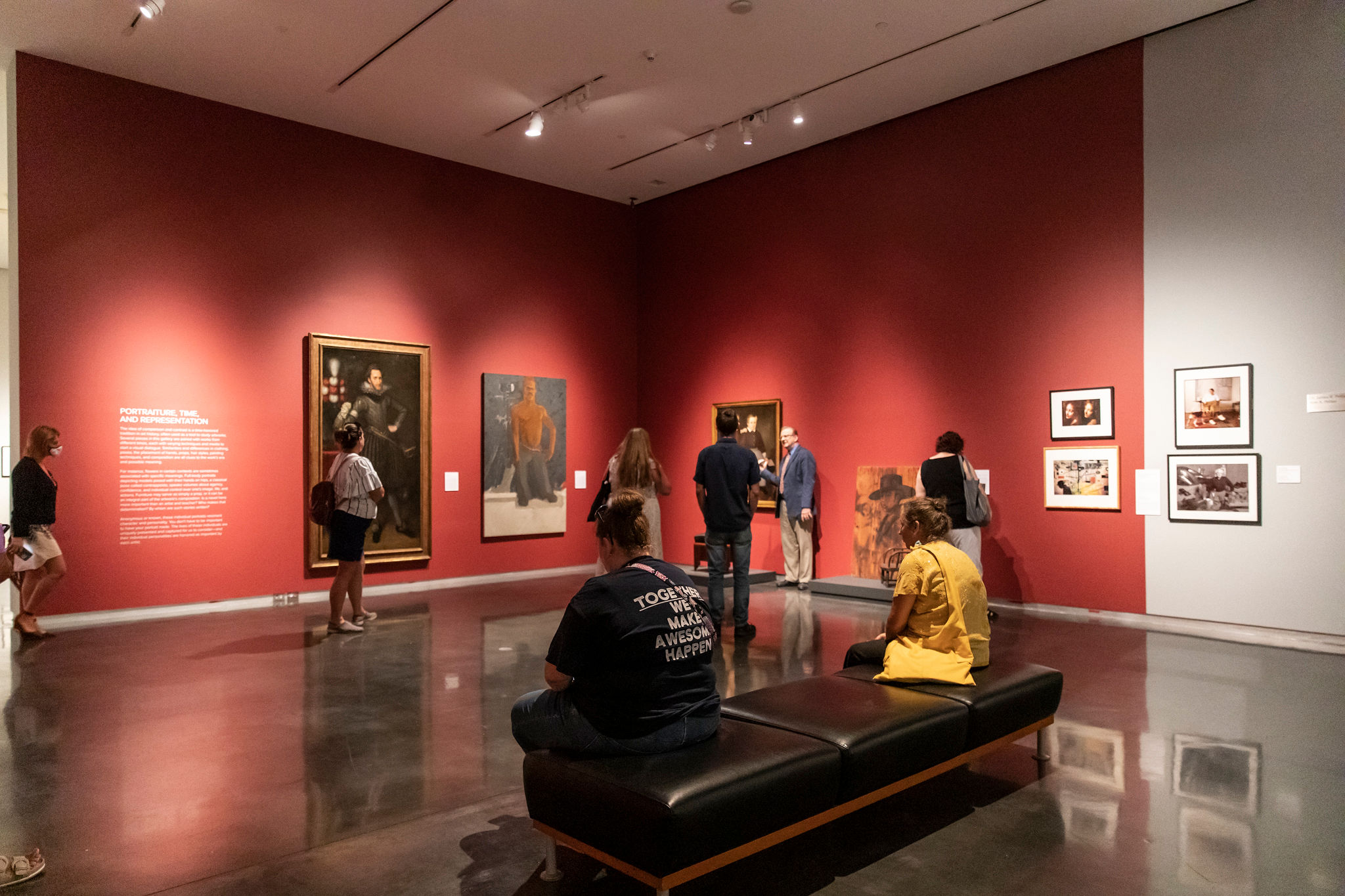Local art enthusiasts are probably familiar with the LSU Museum of Art, located on the fifth floor of the Shaw Center for the Arts in downtown Baton Rouge. What visitors might not realize is how long it takes the museum’s exhibits to be acquired and arranged. Working a couple of years in advance, Michelle Schulte, curator and director of public programs, goes through a lengthy process of nailing down new exhibits.
“You have a mixture of exhibitions that you rent or borrow either from traveling companies or from other institutions,” she says. “You want to be able to bring your community works that they wouldn’t otherwise see, and so we’re borrowing them from across the country.”
A sized-down replica of the museum sits in Schulte’s office. The model feels like a doll house, except that it’s marked with sticky notes and tiny pictures of the art that will someday hang in its full form two floors above. This model is instrumental in the planning process behind exhibitions, but it is also just one piece of the pie. The meticulous detail in the model is paralleled by the staff members who work tirelessly to create the perfect thematic experience for visitors.
|
|
|
By borrowing from traveling exhibits, utilizing its own collection and employing the distinct visions of staff members, the LSU Museum of Art team is able to bring its visions to life. Hidden behind a partition in the museum’s left-wing, staff members work to unpack pieces, write condition reports and assemble the gallery to accommodate them. This assembly includes repainting walls to complement each exhibit’s aesthetics, as well as restructuring moveable walls and platforms.
While the LSU Museum of Art regularly features borrowed works, it also makes use of its own expansive collection.
“We have about 6,500 objects, and otherwise they don’t go on view, so we bring them out regularly, do the research, and put them together in thematic ways,” Schulte says.

Those familiar with the museum will know that there are different gallery spaces to accommodate shows of different themes or durations. A small, intimate space at the left entry of the museum is often used to feature singular artists, while the space on the rightmost wing of the gallery usually features traveling shows. Both of these areas feature up to three different shows a year, while there are also spaces reserved for the permanent collection.
During 225‘s visit to the museum, curatorial fellow Clarke Brown, registrar Marianna Luquette and preparator Travis Pickett are working to prepare the upcoming exhibitions: Blurring Boundaries: The Women of American Abstract Artists, 1936-Present (July 14-Oct. 23, 2022), and Mario Moore: Responding to History (July 14-Oct. 23, 2022).
Brown is currently showcasing Mario Moore: Responding to History. This particular exhibit will go into detail about the creation of Moore’s works. Moore’s work has been featured at the Arthur Roger Gallery in New Orleans, a gallery the LSU Museum of Art has a close relationship with. Moore is from Detroit, but his work, “During and After the Battle,” depicts themes from the Civil War.
“The contrasting wall will be (artist) Mark Gibson, so he actually worked with Moore to create the piece and they each had their own take on it. Mario’s work is in response to a drawing Mark did about the battle of Antietam during the Civil War, so what I’ll be trying to portray is a kind of call and response,” Brown explains.
|
|
|

The exhibit will feature a red and blue wall, covered with each of the artists’ works, as well as iPads with information for visitors to get more context on the artists’ processes.
Overall, the museum works to show not only the art but the stories behind each piece, enriching the viewer’s experience.
Visit the Mario Moore: Responding to History exhibit, among others, at 100 Lafayette St. on the fifth floor of the Shaw Center for the Arts. The LSU Museum of Art is open from 10 a.m.- 5 p.m. Monday through Saturday; 10 a.m.- 8 p.m. on Thursdays; and 1 p.m.- 5 p.m. on Sundays.






